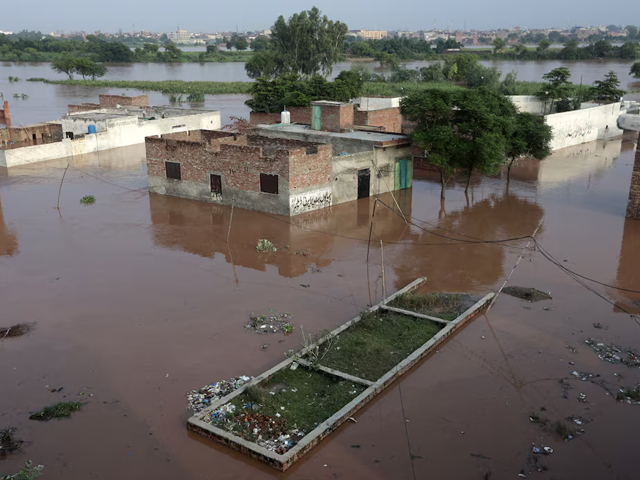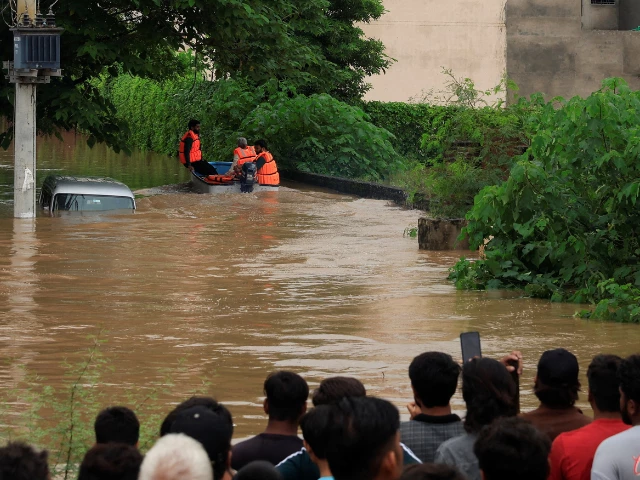The National Disaster Management Authority (NDMA) has reported 16 deaths during the last two days, raising the toll to 831 over the past two months.
The floods, triggered by torrential rains and excessive discharge of water from India, have wreaked havoc, leaving thousands of people marooned and displaced while causing severe damage to property, infrastructure and ready crops.
Three transboundary rivers that cut through Punjab, which borders India, have swollen to exceptionally high levels, affecting more than 2,300 villages.
Read More: Worst monsoon floods in decades leave millions displaced in Pakistan
According to NDMA, the hardest-hit provinces are Khyber-Pakhtunkhwa (K-P) with 480 deaths while Punjab reported 191 fatalities. Sindh recorded 58 deaths, Balochistan 24, and Gilgit-Baltistan 41. Azad Kashmir has reported 29 fatalities, while Islamabad reported eight deaths. Children have borne the brunt of the disaster, with 219 minors among the deceased. The floods have also claimed the lives of 128 women and 484 men.
The impact on the country’s infrastructure has been devastating, with 238 bridges washed away and 661 kilometers of road networks submerged. The floods have also destroyed 9,000 homes and led to the loss of over 6,000 animals.
More than 35,000 people have been displaced due to the floods, many of whom are now living in relief camps. K-P has the highest number of displaced individuals at 26,000, followed by 6,000 in Punjab and 3,000 in Gilgit-Baltistan.
In response to the crisis, 1,880 rescue operations have been conducted, rescuing more than 500,000 people. Of these, 485,000 were rescued in Punjab, while 14,000 were moved to safe and higher locations in K-P. Emergency relief efforts are continuing as authorities strive to assist the affected communities and mitigate the ongoing disaster.
Also Read: Kartarpur Gurdwara to reopen soon following restoration work
Heavy rains have ravaged most parts of Pakistan with a forecast of more heavy downpours in coming days. On Friday, floodwaters reached the outskirts of Lahore and threatened to submerge Jhang in what is being called the worst flooding in nearly 40 years in that region.
“The ongoing rescue operation is the biggest in Punjab’s history,” said Irfan Ali Khan, head of the provincial disaster management agency, while speaking at a press conference.
He revealed that over 800 boats and 1,300 rescue personnel have been deployed to evacuate people, mainly from rural areas along the banks of the three rivers.

Houses are partially submerged on the banks of flooded Ravi river in Lahore on August 28, 2025. Photo: Reuters
The disaster follows a tragic sequence of calamities in mid-August, when torrential rains triggered deadly landslides in K-P, killing over 400 people within days. The province, located near Afghanistan, faced additional challenges for relief operations for various reasons.
In 2022, Pakistan endured the worst floods in its history, submerging on-third of the country, with Sindh being the hardest-hit. This year’s floods further underscore the growing vulnerability of the nation to the increasingly severe impacts of climate change, with devastating consequences for both lives and livelihoods.

